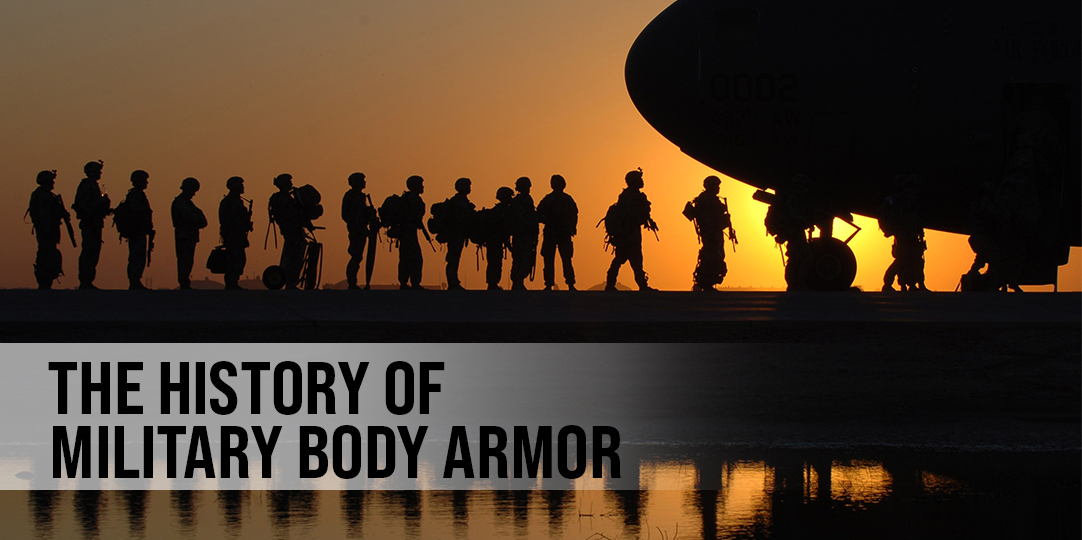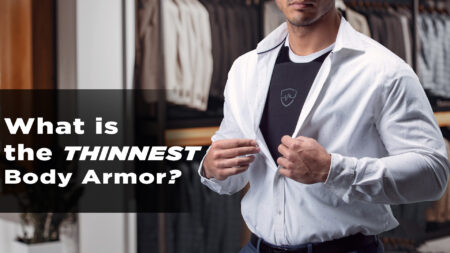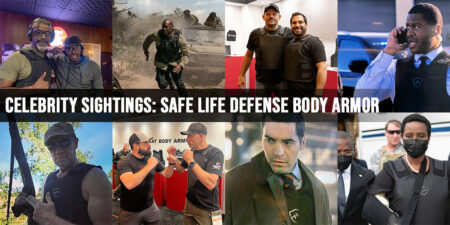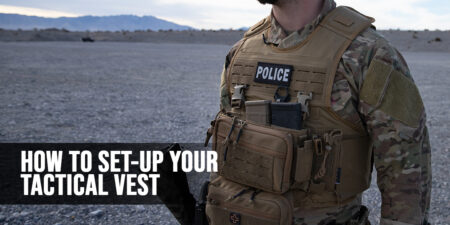The History of Military Body Armor
The history of military body armor loosely goes back to prehistoric times when tribes fought each other. The first armor was raw or poorly tanned animal hides. This had the added advantage of providing some rough camouflage, making it tactical gear as well as armor.
When tanning methods improved, the leather got boiled in water or beeswax, which made it tougher.
Metal came about as humans learned to pull ore from rocks and refine the metal. “According to current historical findings, the earliest examples of metal armors come from Greek Mycenaean Era, whose armorers in 1400 BC managed to create exquisite bronze metal plate armors that protected chest, back, neck, shoulders, upper arms and upper legs of the soldiers,” says History of Armor.
For many centuries, metal armor was only available to the wealthy because it cost so much. The average person conscripted to fight either had no armor or wore whatever leather or scraps they could piece together when it came time to fight.
Now, with modern technology and quality manufacturers like Safe Life Defense, body armor is available to everyone. Safe Life offers several classes and types of armor to fit all needs and budgets. You do not need to be in the military to own and wear military-grade body armor.
The History of Soft Armor
Advances in body armor are mostly the result of militaries around the world and the medical staff that treated the troops. A great example of this is fabric or soft body armor. The first real use of a fabric, silk in this case, comes from the 1800s. George Goodfellow examined the body of a man killed by a bullet to the heart. He found the silk wrapped around the bullet and stopped the bleeding. Goodfellow realized he was on to something and published research about silk as a ballistic combat shirt, leading to silk’s use as a ballistic vest.
Silk body armor is credited with saving the life of the King of Spain in 1901. Some believe if Archduke Franz Ferdinand had worn silk body armor, he would have survived and possibly delayed the start of World War I.
However, advances in bullet technology soon rendered silk armor useless. Nylon was the next advance in fabric armor and is still used today in the carrier that holds the armor. The nylon does not do much to slow or stop the bullet. You still need ballistic protection inside the vest.
The next advance in military body armor was in 1975. Richard A. Armellino brought the first Kevlar body armor to market as a new kind of soft body armor. Today, Kevlar makes up a sizeable part of the body armor market. More advances in fiber tech led to an even better vest. Safe Life uses this new tech to make our Flexible Rifle Armor System (FRAS) and Enhanced Multi-Threat Armor. These lines of protection are rated to stop .30-06 and lesser calibers like the .223, 7.62×39 and .308 Win.
The History of Hard Armor
Hard body armor dates back to the ancient plates. Hard armor plates were used through the centuries and are still sold and used today. As weapons became more powerful, the armor got heavier. A notable turning point in body armor happened as a result of the Battle of Agincourt. English and Welsh longbow archers used these heavy bows to slaughter the French. As a result, smiths had to make armor that could stop one of the heavy-hitting arrows from the longbow.
The drawback to a metal body armor plate is it is heavy and does not flex at all. Modern ceramics are as tough as steel and can be configured to provide some flexibility. Safe Life offers several levels of flexible ceramic armor in different configurations that perform as well as hard body armor.
How is Military Body Armor Used?
Military ballistic armor is used to protect troops in the field. Soldiers can wear anything from a vest and helmet to full armor that covers the sides, legs, and arms. Full armor like this is meant to be worn over clothes rather than under clothes like concealed vests.
Some military armor includes an integrated head protection system as well as a pelvic blast protector.
Safe Life offers both overt and concealable body armor. Our over-the-clothes vests come in hi-viz models for first responders and other people who need to be easily identified. Our concealable vests easily hide under work clothes.
Body Armor Levels
Most people who know about body armor know about the armor levels created by the National Institute of Justice (NIJ). These classes are changing, which we will discuss just after going over the commonly known levels.
Level I – This armor still exists but is not recognized by the NIJ. Avoid this.
Level IIA – This stops 9mm full metal jacket (FMJ) and .40 S&W FMJ rounds from a handgun.
Level II – A bit better than Level IIA. This stops 9mm and. 357 Mag jacketed soft points (JSP).
Level IIIA – Stops everything mentioned above, .357 Sig FMJ, and .44 Mag Semi Jacketed Hollow Point (SJHP). Safe Life Armor starts at this level and goes up.
Level III – Stops everything above and rifle rounds up to the 7.62 x 51, also known as M80 and .308 Win, steel jacketed bullets.
Level IIIA+ – Not an official NIJ rank, but it is used by Safe Life Defense to rank our vests that stop everything above and up to the FN 5.7×28 40gr. The commercially loaded 5.7 round will penetrate less of the armor.
Level IV – This armor stops everything above and up to 30 caliber armor piercing rounds. Safe Life Defense’s version is the Hard Rifle Plate Level IV ICW. Unlike some Level IV armor, our version can take multiple hits when paired with IIIA or IIIA+ soft armor. When you need the ultimate protection, you need Level IV ICW.
New NIJ Body Armor Levels
The NIJ is changing the way it ranks armor when NIJ Standard 0101.07 is released.
- Level II & IIA -> NIJ HG1Level IIIA -> NIJ HG2
- Level III is now split into more categories.
- NIJ RF1 stops 5.56mm 40 grain, 7.62x39mm 120 grain, and 7.62x51mm steel jacketed 149 grain.
- NIJ RF2 stops everything above and 7.62x51mm 149 grain, 5.56mm in 56 and 61.8 grain.
- Level IV -> NIJ RF3
Safe Life’s Hard Rifle Plate Level IV ICW with IIIA or IIIA+ soft armor still exceeds this NIJ level of protection.
Military Armor Level
Military armor is generally Level IV or NIJ RF3. The exact style of armor the ground troops wear is directly related to their duty and the possibility of having to get into a fight. The strongest military armor is made from steel or ceramic plates. Advances in ceramics have made these plates lighter and just as tough as similar metal plates.
Can Our Body Armor Be Used by Military Personnel?
In short, yes, where allowed. Safe Life Defense duty gear and armor can be used by the military as long as it is in coyote tan. In many units, the soldier can pick his own body armor. Our FRAS meets and sometimes exceeds the military armor requirements. If you are in the Marine Corps, Air Force, Army or Navy and can buy your own armor, get an upgrade with Safe Life Defense. If you are not in the military, you can still get the same level of protection used by those who defend our nation.
Ultimate Protection from Safe Life Defense
Safe Life Defense offers the ultimate protection in body armor. When you need to make sure you are protected, trust our products. Ballistic threats meet their match with Safe Life Defense.
Our body armor offers a protection level you cannot find in any other body armor system. We cover civilian and law enforcement agency tactical vests and ballistic armor needs.
Our modular, scalable vests even let you configure your armor to your needs of the moment. Buy ballistic panels or shields and insert them where needed in the carrier.
Our warranty also covers you. In the unfortunate event that you are shot while wearing our body armor, we guarantee a FREE vest replacement. All you have to do is email Warranty@SafeLifeDefense.com an official police report for the incident within your warranty timeframe and we will send you a new vest, free!






